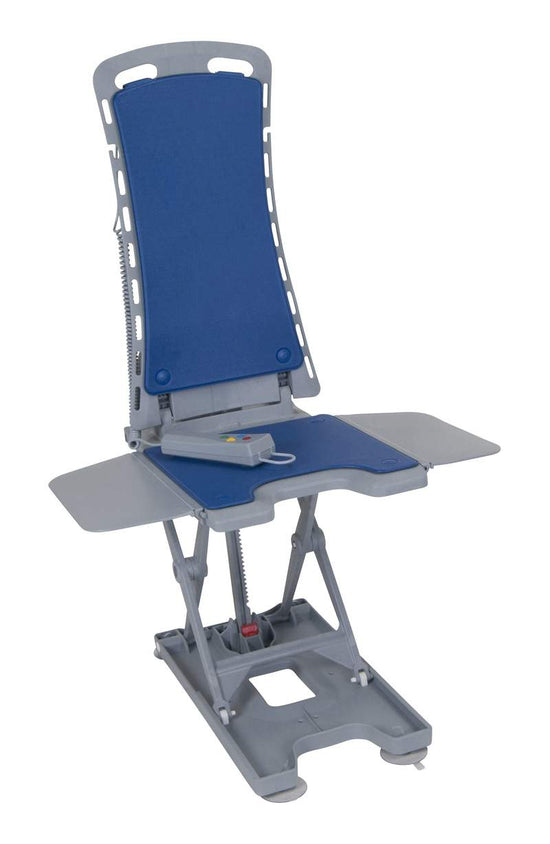Selecting the right mattress for a hospital bed is a critical decision in patient care. For individuals who are bedridden or have limited mobility, pressure ulcers—also known as bedsores—can develop quickly and lead to severe complications. These painful skin injuries not only compromise a patient’s well-being but can also prolong recovery times and increase the complexity of care.
Caretakers play an essential role in preventing these issues, and one of the most effective tools at their disposal is a specially designed mattress. By understanding the features and benefits of these mattresses, you can make informed choices that enhance comfort, promote healing, and ensure better outcomes for those under your care.
Understanding Pressure Ulcers: Causes and Risks for Bedridden Patients
Pressure ulcers, or bedsores, occur when prolonged pressure interrupts blood flow to the skin and underlying tissues, leading to tissue damage. They often develop on bony areas such as the tailbone, heels, and hips. Friction, when the skin rubs against a surface, and shear, where the skin is pulled in opposite directions, further exacerbate the risk by weakening fragile skin.
For bedridden patients, several factors increase susceptibility. Immobility, often due to illness or injury, prevents repositioning, leading to sustained pressure on vulnerable areas. Prolonged exposure to moisture from incontinence heightens skin vulnerability, making it more prone to breaking down. Poor nutrition and hydration can also impair skin health and slow the body’s ability to repair tissue, further elevating the risk of ulcers.
Caretakers play a crucial role in prevention by ensuring frequent repositioning—ideally every two hours—to alleviate pressure. Maintaining clean and dry skin, using moisture barriers, and monitoring for early signs of skin damage are also essential. Additionally, incorporating pressure-relieving mattresses and cushions can further reduce risks. A balanced, nutrient-rich diet and adequate hydration can support skin integrity, aiding in ulcer prevention and overall patient well-being.
The Role of Hospital Bed Mattresses in Preventing Pressure Ulcers
Hospital bed mattresses play a crucial role in preventing pressure ulcers, particularly for patients with limited mobility. Pressure ulcers develop when prolonged pressure restricts blood flow to the skin, causing tissue damage. Specialized mattresses equipped with features like airflow and pressure redistribution are designed to counter this risk effectively.
Airflow mattresses, incorporating alternating pressure technology, are among the most effective solutions. They contain air-filled cells that cyclically inflate and deflate, redistributing pressure across the body. This alternating action reduces pressure on vulnerable areas, such as the hips and heels, promoting healthy blood flow and tissue integrity. Additionally, features like microclimate control regulate temperature and moisture at the skin surface. By managing humidity and keeping the skin dry, these mattresses minimize the risk of skin breakdown, an essential factor in preventing ulcers.
The overall design of hospital bed mattresses also greatly impacts their effectiveness. Split frames and adjustable headboards enable patients to reposition easily, reducing localized pressure. High-quality materials, such as breathable and durable fabrics, provide both cushioning and support, further alleviating stress on the skin. Combining these features with regular patient repositioning ensures a comprehensive approach to pressure ulcer prevention, benefiting both patients and caregivers alike.
Key Features to Look for in a Pressure Ulcer Prevention Mattress
When choosing a pressure ulcer prevention mattress, understanding its key features is essential to ensure effective care for patients with limited mobility. Here are the key features to consider:
Alternating Pressure Technology:
-
Uses air-filled cells that inflate and deflate in a cycle to redistribute pressure evenly across the body.
-
Helps maintain healthy blood flow and minimizes the risk of tissue damage caused by prolonged pressure on vulnerable areas.
Microclimate Control:
-
Prevents moisture build-up by regulating temperature and maintaining a dry environment.
-
Reduces the risk of skin breakdown, ensuring healthier skin even for long-term use.
Material Quality:
-
High-specification foam or hybrid designs provide both support and comfort.
-
Conforms to the body’s shape while evenly distributing weight, alleviating localized stress and reducing the risk of sores.
These features, combined with a proactive care strategy, significantly enhance patient outcomes. Caretakers can efficiently use these mattresses to provide comfort and prevent complications, making them an indispensable tool in pressure ulcer management.
Types of Mattresses Designed for Pressure Relief and Patient Comfort
Selecting the right mattress is essential for preventing pressure ulcers and enhancing patient comfort. Here are three main types of mattresses designed to provide pressure relief:
-
Foam Mattresses (Static Mattresses)
These mattresses use foam to redistribute pressure across the surface. -
Best for low to medium-risk patients.
-
Conform to body shape and reduce friction and shear.
-
Often feature breathable covers to manage moisture and minimize sweating.
-
Air Mattresses (Dynamic Mattresses)
Powered by an electric pump, these mattresses alternate air in different pockets or cells. -
Provide periodic pressure relief by alternating inflation and deflation cycles.
-
Ideal for high-risk patients or those with existing pressure ulcers.
-
Offer consistent pressure redistribution, especially for immobile patients.
-
Hybrid Mattresses
A combination of foam and air technologies for advanced support. -
Provide pressure relief through air cells and comfort via a foam layer.
-
Suitable for varied risk levels, from low to high.
-
Offer flexibility and adaptability for different patient needs.
These mattress types cater to different levels of risk and patient requirements, ensuring effective pressure ulcer prevention while improving comfort.
How to Assess Mattress Effectiveness for Patient Needs
To choose an effective hospital bed mattress, caretakers must evaluate several critical factors to ensure optimal patient comfort and pressure ulcer prevention. The mattress material plays a foundational role. Foam provides excellent support and pressure relief, while gel mattresses enhance comfort and redistribution for high-risk patients. Low-air-loss mattresses, which regulate temperature and moisture, are ideal for individuals with skin conditions. Alternating pressure mattresses offer dynamic support by inflating and deflating air cells to alleviate pressure on vulnerable areas.
Pressure redistribution capabilities are another essential consideration. Mattresses with zoned support or multi-layer foam construction help distribute weight evenly, reducing pressure points that can lead to ulcers. Customizable pressure settings allow adaptation to individual needs, providing targeted relief where necessary.
Patient-specific needs, such as mobility, weight, and medical history, should guide mattress selection. Immobile patients or those with compromised skin require a higher level of pressure redistribution, while others may benefit from moisture-control features. Regular maintenance is equally vital—facilities should monitor wear, conduct cleaning protocols, and replace worn mattresses promptly to maintain effectiveness.
By factoring in material, design, and patient requirements alongside regular maintenance, caregivers can significantly enhance outcomes while ensuring patient safety and well-being.
Benefits of Specialized Mattresses for Healing and Recovery
Specialized mattresses are a valuable tool in patient care, promoting faster healing and preventing complications. Their design focuses on comfort, pressure redistribution, and recovery support. Below are the key benefits they offer:
-
Improved Comfort
These mattresses provide tailored support, conforming to the body’s shape for optimal comfort. Patients experience better rest, which is critical for recovery. -
Pressure Ulcer Prevention
By evenly distributing weight and relieving pressure points, these mattresses help prevent painful bedsores. Alternating pressure systems further enhance protection by improving blood flow. -
Enhanced Circulation
Features like lateral rotation and airflow systems stimulate circulation, reducing the risks of conditions like deep vein thrombosis and aiding tissue repair. -
Faster Healing
By reducing stress on vulnerable skin areas and minimizing moisture buildup, these mattresses create an ideal environment for wounds to heal. -
Ease of Maintenance
Many come with antimicrobial covers that are easy to clean, ensuring hygiene and reducing infection risks in healthcare settings.
Caretakers and healthcare providers looking to invest in specialized mattresses can explore the comprehensive range at Everything Medical. These solutions prioritize patient comfort and effective recovery.




